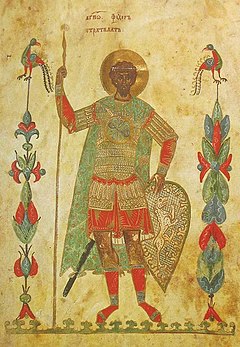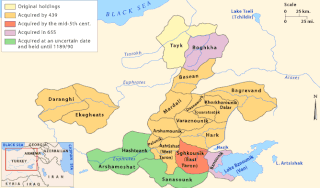
Pope Theodore II was Pope for twenty days in December 897. His short reign occurred during a period of partisan strife in the Catholic Church, which was entangled with a period of feudal violence and disorder in central Italy. His main act as pope was to annul the "Cadaver Synod" of the previous January, therefore reinstating the acts and ordinations of Pope Formosus, which had themselves been annulled by Pope Stephen VI. He also had the body of Formosus recovered from the river Tiber and reburied with honour. He died in office in late December 897.

Theodore Roosevelt Jr. was an American statesman, politician, conservationist, naturalist, and writer who served as the 26th president of the United States from 1901 to 1909. He previously served as the 25th vice president of the United States from March to September 1901 and as the 33rd governor of New York from 1899 to 1900. As a leader of the Republican Party during this time, he became a driving force for the Progressive Era in the United States in the early 20th century. His face is depicted on Mount Rushmore, alongside those of George Washington, Thomas Jefferson, and Abraham Lincoln. In polls of historians and political scientists, Roosevelt is generally ranked as one of the five best presidents.

Theodoros I Komnenos Laskaris was the first Emperor of Nicaea.

Theodore II Doukas Laskaris or Ducas Lascaris was Emperor of Nicaea from 1254 to 1258.

Theodore of Tarsus was Archbishop of Canterbury from 668 to 690, best known for his reform of the English Church and establishment of a school in Canterbury.
John X Kamateros, was the Patriarch of Constantinople from 5 August 1198 to April/May 1206.

Saint Theodore of Amasea is one of the two recognized saints called Theodore who are venerated as warrior saints and Great Martyrs in the Orthodox and Roman Catholic Churches. He is also known as Theodore Tyron. The other saint of the same name is Theodore Stratelates, also known as Theodore of Heraclea, but this second St Theodore may never have had a separate existence. When the epithet is omitted, the reference is usually to St Theodore of Amasea.
Berhtwald was the ninth Archbishop of Canterbury in England. Documentary evidence names Berhtwald as abbot at Reculver before his election as archbishop. Berhtwald begins the first continuous series of native-born Archbishops of Canterbury, although there had been previous Anglo-Saxon archbishops, they had not succeeded each other until Berhtwald's reign.

Theodore II Palaiologos or Palaeologus was Despot in the Morea from 1407 to 1443 and in Selymbria from then until his death.
Bosa was an Anglo-Saxon Bishop of York during the 7th and early 8th centuries. He was educated at Whitby Abbey, where he became a monk. Following Wilfrid's removal from York in 678 the diocese was divided into three, leaving a greatly reduced see of York, to which Bosa was appointed bishop. He was himself removed in 687 and replaced by Wilfrid, but in 691 Wilfrid was once more ejected and Bosa returned to the see. He died in about 705, and subsequently appears as a saint in an 8th-century liturgical calendar.
Manuel I, surnamed Sarantenos or Charitopoulos, was Patriarch of Constantinople from December 1216 or January 1217 to 1222. He seems to have been called "the Philosopher": George Akropolites says he was "a philosopher, it seems, in deed, and so named by the people." Manuel was Patriarch-in-exile as at the time his titular seat was occupied by the Latin Patriarch of Constantinople, and he resided in Nicaea. Before the sack of 1204, Manuel was a deacon and hypatos ton philosophon in Constantinople. This is likely the source of his epithet "the Philosopher".
The Laskaris or Lascaris family was a Byzantine Greek noble family whose members formed the ruling dynasty of the Empire of Nicaea from 1204 to 1261 and remained among the senior nobility up to the dissolution of the Byzantine Empire, whereupon many emigrated to Italy and then to Smyrna. According to George Pachymeres, they were also called Tzamantouros (Tζαμάντουρος). The feminine form of the name is Laskarina (Λασκαρίνα).

The Battle of Klokotnitsa occurred on 9 March 1230 near the village of Klokotnitsa. As a result, the Second Bulgarian Empire emerged once again as the most powerful state in South-Eastern Europe. Nevertheless Bulgarias power was soon to be contested and surpassed by the rising Empire of Nicaea.

Theodore Stratelates, also known as Theodore of Heraclea, is a martyr and Warrior Saint venerated with the title Great-martyr in the Eastern Orthodox Church, Eastern Catholic and Roman Catholic Churches and Oriental Orthodox Churches.
Events from the year 1101 in Ireland.
Catherine of Bulgaria was Empress-consort to Byzantine emperor Isaac I Komnenos and co-regent of Constantine X for a period after the abdication of her spouse in 1059. She was a daughter of Ivan Vladislav of Bulgaria and his wife Maria, and thus a sister of Presian and Alusian. Catherine was also a paternal aunt of Maria of Bulgaria.
Michael IV Autoreianos, was the Patriarch of Constantinople from 1206 to his death in 1212.

Theodore II Eirenikos, , also known as Theodore Kopas or Koupas (Κωπάς/Κουπάς), was a high-ranking Byzantine official and chief minister during most of the reign of the Byzantine emperor Alexios III Angelos. After the fall of Constantinople to the Fourth Crusade, he fled to the Empire of Nicaea, where he became a monk and served as Patriarch of Constantinople in exile in 1214–1216.
Aaron was a younger son of the last tsar of the First Bulgarian Empire, Ivan Vladislav. After the Byzantine conquest of Bulgaria he entered Byzantine service along with his brothers, and held a series of higher military commands in the eastern provinces of the Byzantine Empire during the 1040s and 1050s, rising from patrikios to protoproedros in the process. In this capacity, he fought in the first battles against the invading Seljuq Turks, as well as, unsuccessfully, against the uprising in 1057 of his brother-in-law Isaac I Komnenos.













